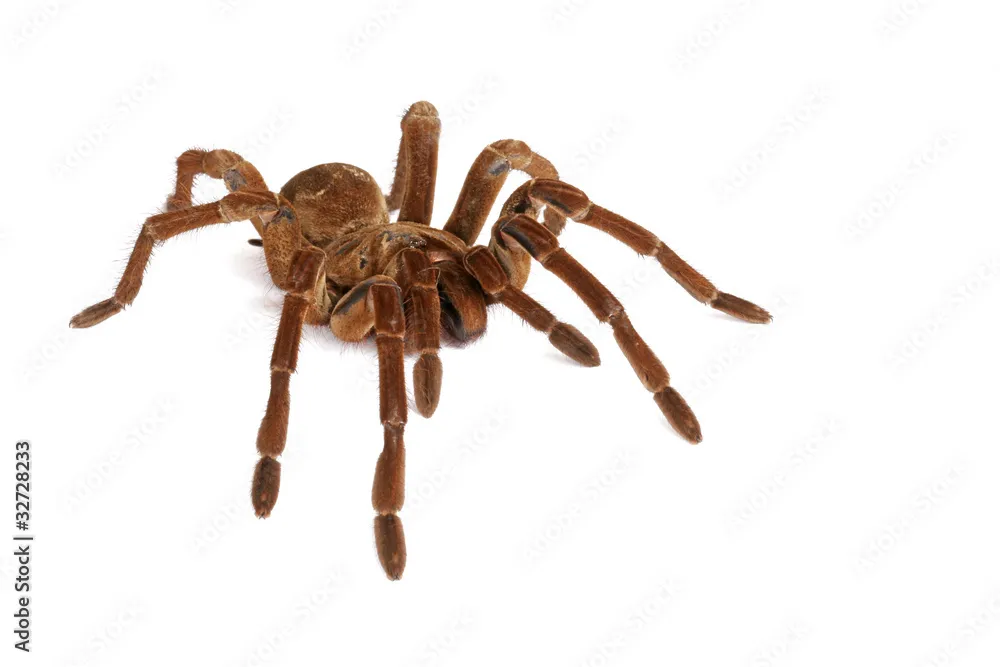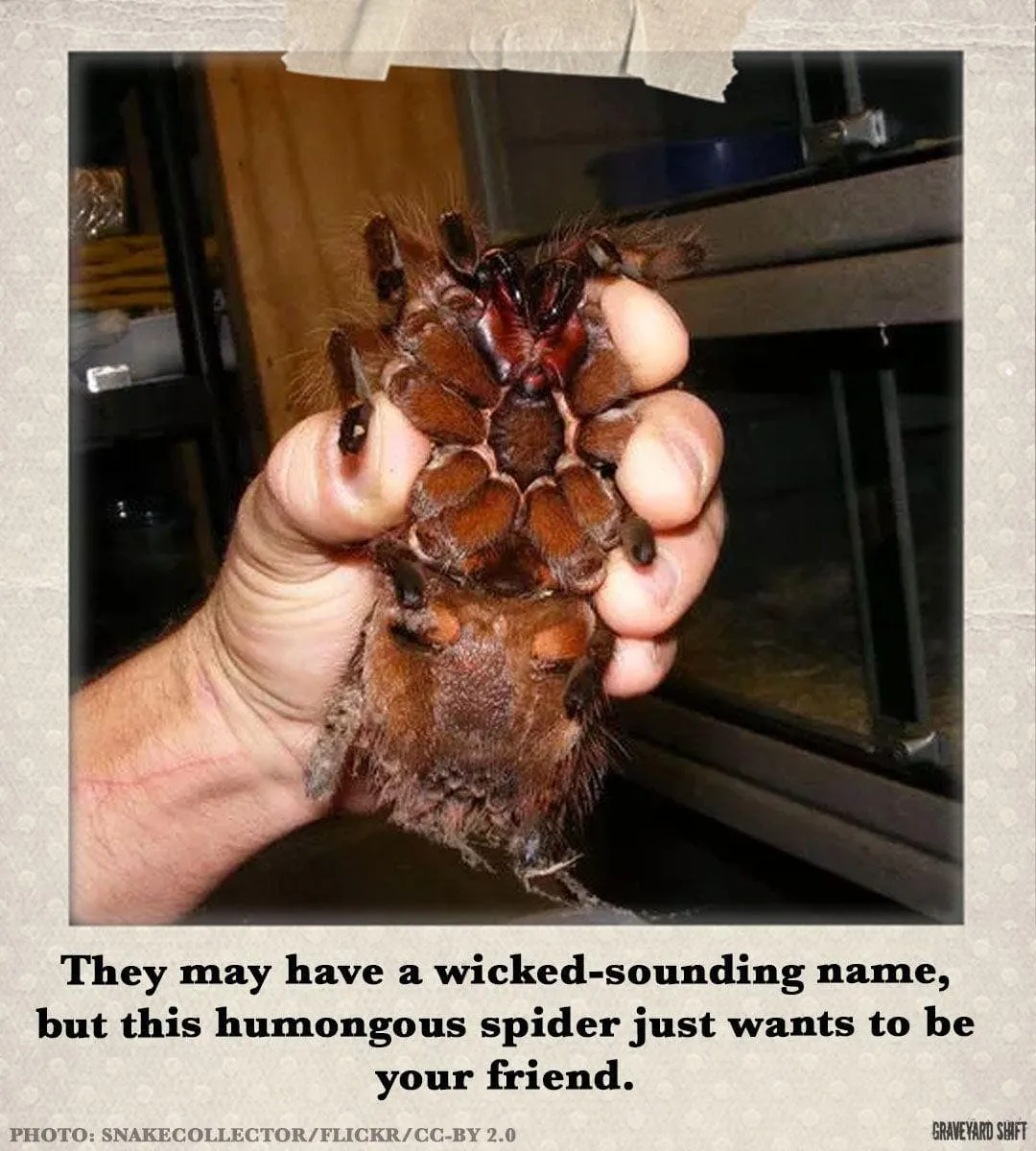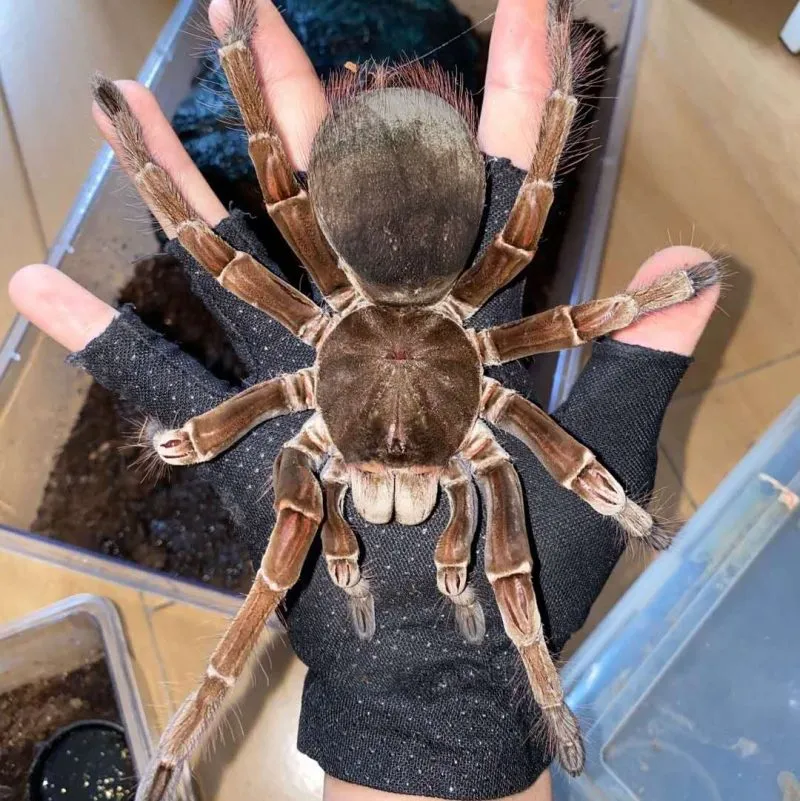Goliath Tarantula Lifespan The Basics
The Goliath Birdeater tarantula (Theraphosa blondi), often simply called the Goliath tarantula, is one of the largest spiders in the world, captivating many with its size and impressive presence. Understanding the goliath tarantula lifespan is crucial for anyone considering keeping one as a pet. These fascinating creatures, native to the rainforests of South America, present unique challenges and rewards to their keepers. The longevity of a Goliath tarantula is significantly influenced by various factors, including its sex, diet, and environmental conditions. Knowing how long these magnificent arachnids typically live helps potential owners prepare for the long-term commitment required to provide proper care. This understanding is the cornerstone of responsible pet ownership, ensuring the spider’s well-being throughout its lifespan. It also allows for better planning and a deeper appreciation for the life cycle of this incredible species.
What is the Average Goliath Tarantula Lifespan?
The average goliath tarantula lifespan varies considerably depending on the sex of the spider. Female Goliath tarantulas generally live much longer than males. On average, a female Goliath tarantula can live for 15 to 25 years or even longer under optimal conditions. This longevity is a significant factor to consider if you’re planning to own one of these spiders, as it represents a substantial time commitment. In contrast, male Goliath tarantulas have a much shorter lifespan, typically ranging from 3 to 6 years. This difference is primarily due to the mating process. Once a male reaches maturity, his primary goal is to mate, and after doing so, he often dies, though he may survive for a short period. Therefore, the lifespan of a Goliath tarantula greatly depends on whether it is a male or a female, with females living significantly longer and representing a more extended responsibility for pet owners. Understanding this distinction is fundamental to providing the proper care and planning for the spider’s needs throughout its life.
Male vs Female Differences in Lifespan

As mentioned earlier, the most significant difference in the goliath tarantula lifespan is between males and females. Male Goliath tarantulas, once they reach maturity, which is typically around 2 to 3 years old, undergo a final molt that transforms them into adults. This final molt is characterized by the appearance of palpal bulbs on the pedipalps, which are used for mating. After mating, the male’s life is significantly shortened, as they often die shortly thereafter due to exhaustion and a decline in their physical condition. Females, on the other hand, continue to molt periodically throughout their lives, growing larger and living much longer. The female’s reproductive cycle, involving egg sac production and care, does not drastically impact their lifespan as much as the male’s mating process. This disparity in lifespan makes a considerable difference in the care and expectations for owners. Knowing the sex of your Goliath tarantula is critical because it helps to anticipate its longevity and plan for its needs over time.
Factors Influencing Goliath Tarantula Longevity
Several factors greatly impact the goliath tarantula lifespan. The most crucial factors include diet, environment, and overall health management. Providing a well-balanced diet consisting of insects such as crickets, cockroaches, and mealworms, along with occasional treats, supports the spider’s growth and health, which, in turn, affects its lifespan. The environmental conditions within the enclosure, specifically temperature and humidity, need to be closely monitored and maintained to replicate the spider’s natural habitat in the rainforests of South America. Improper environmental conditions can lead to health issues that shorten the lifespan. Additionally, maintaining a clean and well-maintained enclosure is essential for preventing diseases and infections. Regular inspections and the provision of appropriate enrichment can help ensure a long and healthy life for your Goliath tarantula. Moreover, avoiding potential stressors such as overcrowding, rough handling, and exposure to toxins also promotes longevity.
Diet and Nutrition The Key to a Long Life
Proper nutrition is paramount in extending the goliath tarantula lifespan. The diet should consist primarily of live insects appropriate for the spider’s size, providing essential proteins and nutrients for healthy growth and molting. Common food items include crickets, mealworms, and dubia roaches, all of which are easily accessible from reputable pet stores or online suppliers. It is important to vary the diet to provide a range of nutrients and prevent nutritional deficiencies. Overfeeding should be avoided, as it can lead to obesity and other health problems. Instead, feed the spider based on its size and appetite. Regularly offering a varied diet ensures the tarantula receives all the necessary vitamins and minerals. Supplementing the diet with occasional treats such as pre-killed pinky mice (for adult females only) can provide extra nutrients, but should be done sparingly. Clean, fresh water should always be available in a shallow dish within the enclosure. Proper hydration is essential to assist with molting and overall health. Regularly monitor the spider’s feeding habits and adjust the diet as needed to maintain optimal health and promote a long lifespan.
Environment and Habitat

Creating the appropriate environment is essential to extend the goliath tarantula lifespan and replicate its natural habitat. The enclosure should be large enough to allow the tarantula to move and behave naturally. A good rule of thumb is to provide an enclosure that is at least three times the spider’s leg span in width. The enclosure’s substrate should be a mix of peat moss, coconut fiber, and sphagnum moss to retain humidity, which is crucial for the tarantula’s health and molting process. Maintaining the correct temperature and humidity levels is also vital, typically around 75-85°F (24-29°C) and 75-85% humidity. Regular monitoring with a thermometer and hygrometer is required. The enclosure should also include hiding places such as cork bark or artificial plants to provide security and reduce stress. Proper ventilation is critical to prevent mold and maintain air quality. The enclosure must be kept clean by removing any uneaten food and fecal matter. Consistent maintenance of the environment, including temperature, humidity, and cleanliness, will play a significant role in the spider’s overall health and longevity, maximizing its lifespan.
Common Health Issues That Affect Lifespan
Several health issues can negatively impact the goliath tarantula lifespan. One of the most common is dehydration, often caused by insufficient access to water or improper humidity levels. This can impede molting and lead to other health complications. Another common issue is fungal infections, which can arise from a damp and poorly ventilated enclosure. Proper ventilation and regular cleaning are vital to prevent these infections. Parasites, such as mites, can also infest tarantulas, causing irritation and stress, which in turn can shorten their lifespan. These issues can often be prevented with careful husbandry practices. Overfeeding can lead to obesity, affecting mobility and overall health. Injury from falls or rough handling can also impact lifespan. It is crucial to recognize the signs of illness or injury early and seek advice from a veterinarian or an experienced tarantula keeper. Regular observation of the tarantula’s behavior and appearance is vital for detecting and addressing any potential health issues, promoting a longer and healthier life.
Parasites and Predators
Goliath tarantulas, especially in captivity, are susceptible to certain parasites and predators that can impact their lifespan. Mites are a common parasite that can infest the tarantula, feeding on its hemolymph and causing significant irritation and stress. These mites are often introduced through contaminated substrate or insects. Regular observation and quarantine of new additions can help prevent infestation. Protozoan infections are another potential threat, especially if the enclosure is not kept clean, or humidity levels are not properly managed. Predators in a captive setting are not as common but can pose a risk, particularly if other pets such as cats or dogs have access to the enclosure. In their natural habitat, goliath tarantulas face predators such as snakes and other large predators. However, in a controlled environment, this risk is greatly reduced with proper care. Maintaining a clean and secure enclosure, using pest-free substrate, and carefully monitoring the health of the tarantula are crucial for minimizing the risk of parasites and predators, thus contributing to a longer lifespan.
Maintaining a Healthy Goliath Tarantula Enclosure

Maintaining a healthy goliath tarantula enclosure is pivotal for its longevity. The enclosure should be large enough to allow for movement and exploration, ideally with dimensions that are at least three times the tarantula’s leg span. It needs to be kept spotlessly clean to prevent the buildup of waste and the growth of harmful bacteria or fungi. Regular spot cleaning, removing uneaten food and fecal matter, is essential. Complete substrate changes should be performed every six to twelve months. The substrate should consist of a mixture of peat moss, coconut fiber, and sphagnum moss, helping maintain the necessary humidity levels. Ensure that proper ventilation prevents mold and provides fresh air. The enclosure must have secure lids to prevent escapes and prevent other pets from reaching the spider. Providing hiding places such as cork bark or artificial plants will offer a sense of security, thereby reducing stress, which is crucial for a long and healthy life. Regularly inspect the enclosure for any signs of mites or other parasites. The health of the enclosure directly impacts the health and lifespan of your Goliath tarantula; therefore, consistent maintenance is key.
Temperature and Humidity
Temperature and humidity are two critical environmental factors that significantly affect the goliath tarantula lifespan. Maintaining the correct temperature within the enclosure is essential for the spider’s metabolism and overall well-being. The ideal temperature range is between 75-85°F (24-29°C). Use a thermometer to monitor the temperature regularly and adjust the heating system or room temperature accordingly. Humidity is also vital for successful molting and hydration. The ideal humidity level for Goliath tarantulas is generally between 75-85%. Regularly mist the enclosure with dechlorinated water, but ensure the substrate does not become overly saturated. A hygrometer will assist in monitoring the humidity levels. Avoid sudden fluctuations in temperature and humidity, as these can stress the tarantula. Inadequate temperature or humidity can lead to various health issues, including dehydration and problems with molting. The careful and consistent management of temperature and humidity ensures the spider remains healthy and lives a long life.
Enrichment and Stimulation
While Goliath tarantulas are not known for being highly active or needing a lot of stimulation, providing some enrichment can contribute to their well-being and potentially support a longer lifespan. Enriching the enclosure can help reduce stress and boredom. You can add elements like artificial plants, pieces of cork bark, and various hiding places, providing the spider with areas to explore and feel safe. The layout of the enclosure can be changed occasionally to provide new experiences. Although Goliath tarantulas may not actively play, creating a visually stimulating environment and occasionally rearranging elements within the enclosure can enhance the quality of life. Avoid excessively handling the spider, as it can cause stress. Regularly observe the spider in its environment and note its behavior. Tailoring the enclosure to meet the tarantula’s needs, while keeping in mind that they are primarily solitary creatures, is key to creating a thriving habitat. By providing enrichment, you foster a healthier and less stressful environment, contributing to a potentially longer lifespan.
Signs of an Aging Goliath Tarantula

As a Goliath tarantula ages, certain observable changes will indicate its progression through the later stages of its life. One of the most noticeable signs is a decrease in activity levels. Older tarantulas tend to move less and may spend more time in their hide, conserving energy. The appetite might decrease, and they may show less interest in food. Molting frequency also diminishes significantly, with the interval between molts becoming much longer, or, eventually, molting stops completely. The physical appearance of an aging Goliath tarantula may also change, with the exoskeleton possibly appearing duller or having small imperfections. The spider might become more fragile. If the tarantula had any previous injuries, they could become more pronounced. Recognizing these signs is crucial for adjusting the care to meet the changing needs of the spider. Providing a quieter environment and ensuring easy access to food and water will help make its later years comfortable.
Changes in Behavior and Appearance
Changes in behavior and appearance often accompany the aging process of a Goliath tarantula. In terms of behavior, older tarantulas tend to become less active and may spend more time resting in their hide. They may show less interest in exploring their enclosure and may display a reduced feeding response. This is a natural part of aging, as their metabolism slows down. Regarding physical changes, the exoskeleton may show signs of wear and tear, such as a duller appearance or slight imperfections. The spider’s movements might become slower and less coordinated. The fangs and other appendages may show signs of age. If the tarantula has sustained any injuries during its life, they could become more prominent as it ages. Careful observation of these changes is critical for adjusting the tarantula’s care. A focus on providing a comfortable environment, reducing stress, and ensuring easy access to food and water will help support the spider during this phase of its life. Recognizing these changes allows for the best possible quality of life in its later years.
End-of-Life Care Tips
Providing end-of-life care for a Goliath tarantula involves focusing on comfort and minimizing stress. As the spider ages and its health declines, it is vital to create a peaceful environment. Maintain consistent temperature and humidity levels in the enclosure. Reduce handling to prevent stress and avoid any unnecessary disturbances. Ensure that the spider has easy access to water, as older tarantulas may have difficulty reaching their water source. Reduce feeding frequency or offer pre-killed insects to make feeding less strenuous. It’s important to monitor the tarantula closely for signs of discomfort, such as difficulty moving or loss of appetite. Keeping the enclosure clean and minimizing any potential stressors will enhance the spider’s comfort during its final stages of life. Consult with an experienced tarantula keeper or a veterinarian specializing in exotic animals for advice. Their expertise can help guide you through this challenging period and provide the best possible care for your Goliath tarantula. Preparing for the eventual end of life is a difficult but necessary part of responsible pet ownership, and providing compassionate care is essential.
How to Provide a Comfortable Final Stage

Providing a comfortable final stage for a Goliath tarantula involves several important considerations. Firstly, maintain a clean and stable environment to prevent any unnecessary stress or discomfort. Ensure the enclosure is at the correct temperature and humidity levels, creating an optimal environment for the aging spider. Minimize handling and disturbances, as older tarantulas are more fragile and susceptible to stress. Offer easily accessible food and water, allowing the spider to feed without needing to expend a lot of energy. You can place food near the spider’s resting place. Observe the spider’s behavior and appearance carefully. If the spider appears to be struggling, consult with an experienced tarantula keeper or a veterinarian for advice. Provide a safe and quiet space where the spider can rest without interruption. Make sure the enclosure provides a comfortable resting spot, such as a soft substrate or a hide, allowing the spider to feel secure. By prioritizing these aspects of care, you can ensure that your Goliath tarantula experiences a dignified and comfortable end-of-life period.
